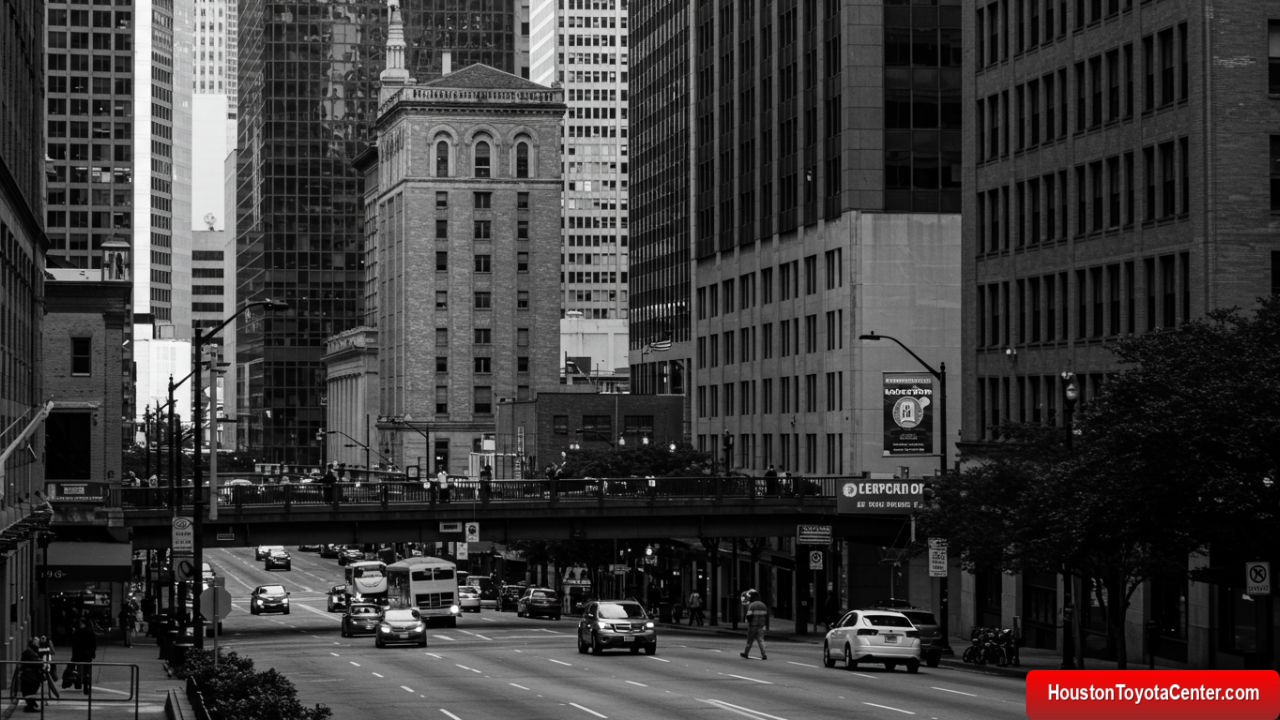Downtown Houston has long been the beating heart of the city — a vibrant hub of commerce, culture, and innovation. Over the past several decades, it has witnessed significant changes, transforming from a business-centric district into a multifaceted urban environment. As Houston continues to grow and adapt to global economic and social trends, the future of downtown’s development presents both challenges and exciting opportunities. From new architectural projects and infrastructure upgrades to sustainability initiatives and enhanced public spaces, the evolution of downtown Houston is poised to redefine the city’s identity.
This article explores the key factors shaping downtown Houston’s future, including major development projects, economic trends, technological advancements, and the increasing focus on creating a more livable and connected urban environment.
1. Current State of Downtown Houston
1.1 Economic and Commercial Landscape
Downtown Houston is home to some of the world’s largest energy companies, law firms, and financial institutions. The Central Business District (CBD) has long been a magnet for corporate headquarters and high-rise office buildings. However, the economic impact of the COVID-19 pandemic and the rise of remote work have forced many businesses to reconsider their office space needs.
Current Commercial Snapshot:
FREE: Quickly identify and understand problems with your vehicle 🚘
CLICK HERE- Over 50 million square feet of office space
- Vacancy rates hovering around 20% due to hybrid work models
- Headquarters for major companies like Shell, Chevron, and JP Morgan
- A growing presence of tech companies and startups
Despite the challenges, downtown Houston remains a critical center for business activity. Companies are adapting by transitioning to more flexible office spaces and creating collaborative work environments. This shift is driving the development of mixed-use buildings that combine office, residential, and recreational spaces.
1.2 Residential Growth and Urban Living
In the early 2000s, downtown Houston was primarily known for its commercial activity. However, in recent years, there has been a significant push toward increasing residential density. Luxury high-rise apartments, loft conversions, and mixed-use developments have led to a growing population in the downtown core.
Residential Trends:
- Over 10,000 residential units in downtown Houston
- Estimated population of 12,000 residents (projected to double by 2035)
- High demand for amenity-rich apartments and condos
- A growing community of young professionals and retirees seeking urban living
2. Major Development Projects
2.1 Skyscraper Boom
Houston’s skyline is already impressive, but new high-rise developments are set to make it even more iconic. Several major skyscraper projects are currently underway, aiming to redefine the city’s architectural landscape.
| Project Name | Height | Completion Date | Purpose |
|---|---|---|---|
| The Preston | 550 ft | 2025 | Residential |
| 6 Houston Center | 715 ft | 2026 | Office & Mixed-Use |
| 609 Main at Texas (Expansion) | 755 ft | 2027 | Office & Retail |
| The Allen | 450 ft | 2024 | Residential & Hotel |
These projects are not just about height — they reflect a broader trend toward multi-purpose spaces that integrate residential, commercial, and leisure facilities.
2.2 Green Spaces and Public Parks
Urban planners are prioritizing green spaces as part of downtown’s transformation. The expansion of parks, pedestrian zones, and bike trails is central to creating a more walkable and environmentally friendly city center.
Key green space projects include:
- Buffalo Bayou Park Expansion – Adding walking and biking paths, native landscaping, and art installations.
- Discovery Green Upgrades – Expanding programming for concerts, festivals, and fitness events.
- New Skypark – A proposed elevated park connecting several downtown districts, inspired by New York’s High Line.
2.3 Transit and Infrastructure Improvements
Houston has historically been a car-centric city, but efforts to enhance public transit are gaining momentum. The expansion of the METRORail system and the introduction of new bus routes aim to make downtown more accessible without relying on personal vehicles.
Transit Highlights:
- Red Line Expansion – Adding new stops to increase connectivity.
- Bike Share Program – Over 100 stations planned by 2025.
- Pedestrian Skywalks – Enhancing walkability through climate-controlled pathways.
3. Technological and Smart City Integration
Downtown Houston is embracing smart city technology to improve infrastructure, public safety, and urban planning. This includes the deployment of sensors, data collection tools, and AI-driven traffic management systems.
3.1 Smart Lighting and Energy Efficiency
LED streetlights equipped with motion sensors and automated dimming features are being installed to reduce energy consumption. Buildings are also being retrofitted with smart HVAC and lighting systems to improve energy efficiency.
3.2 Public Wi-Fi and Connectivity
City-wide public Wi-Fi networks are expanding, providing free high-speed internet in parks, transit hubs, and public spaces. This move supports both residents and visitors while encouraging remote work in urban settings.
3.3 Safety and Surveillance
Enhanced surveillance systems and AI-powered monitoring tools are improving public safety. Real-time data collection allows for quicker response times and more effective policing.
4. Cultural and Entertainment Districts
Downtown Houston’s cultural scene is thriving. New museums, theaters, and music venues are being developed to complement existing landmarks like the Houston Theater District and the Museum of Fine Arts.
4.1 Food and Nightlife Expansion
Houston’s food scene is globally renowned, and downtown is becoming a major culinary destination. New food halls, rooftop bars, and fine-dining establishments are attracting locals and tourists alike.
Popular Developments:
- Bravery Chef Hall – A curated food hall featuring top local chefs.
- POST Houston – A former post office converted into a multi-level dining and entertainment complex.
- Market Square – Historic district undergoing a revitalization with new restaurants and art spaces.
5. Challenges Facing Downtown Development
5.1 Commercial Vacancy Rates
The rise of remote work and hybrid office models continues to challenge the office market. Developers are working to repurpose vacant office space into residential units and mixed-use facilities.
5.2 Flooding and Climate Resilience
Houston’s geography makes it prone to flooding. Major infrastructure improvements, including better drainage systems and flood-resistant building designs, are being prioritized.
5.3 Affordability and Housing Balance
While luxury developments are booming, there’s a growing need for affordable housing in downtown. Incentives for developers to create mixed-income housing are being considered.
6. Future Vision: Downtown Houston in 2035
By 2035, downtown Houston is expected to become a model for mixed-use urban development. Key goals include:
✅ Increasing downtown’s residential population to 25,000+
✅ Reducing office vacancy rates to under 10%
✅ Achieving carbon neutrality through green building standards
✅ Expanding public transit to cover 80% of downtown
✅ Transforming over 30% of downtown space into green areas and pedestrian zones
The combination of economic recovery, technological integration, and urban planning will position downtown Houston as a leader in sustainable urban development. The future looks bright for Houston’s downtown core — a future defined by innovation, community, and adaptability.
✅ Conclusion
Downtown Houston’s development is entering a dynamic new phase. While challenges such as commercial vacancy and climate resilience remain, the city’s proactive approach to smart urban planning and mixed-use development offers a promising outlook. The integration of green spaces, public transit, and cutting-edge technology will ensure that downtown Houston remains a thriving and vibrant center for decades to come.


Leave a Reply